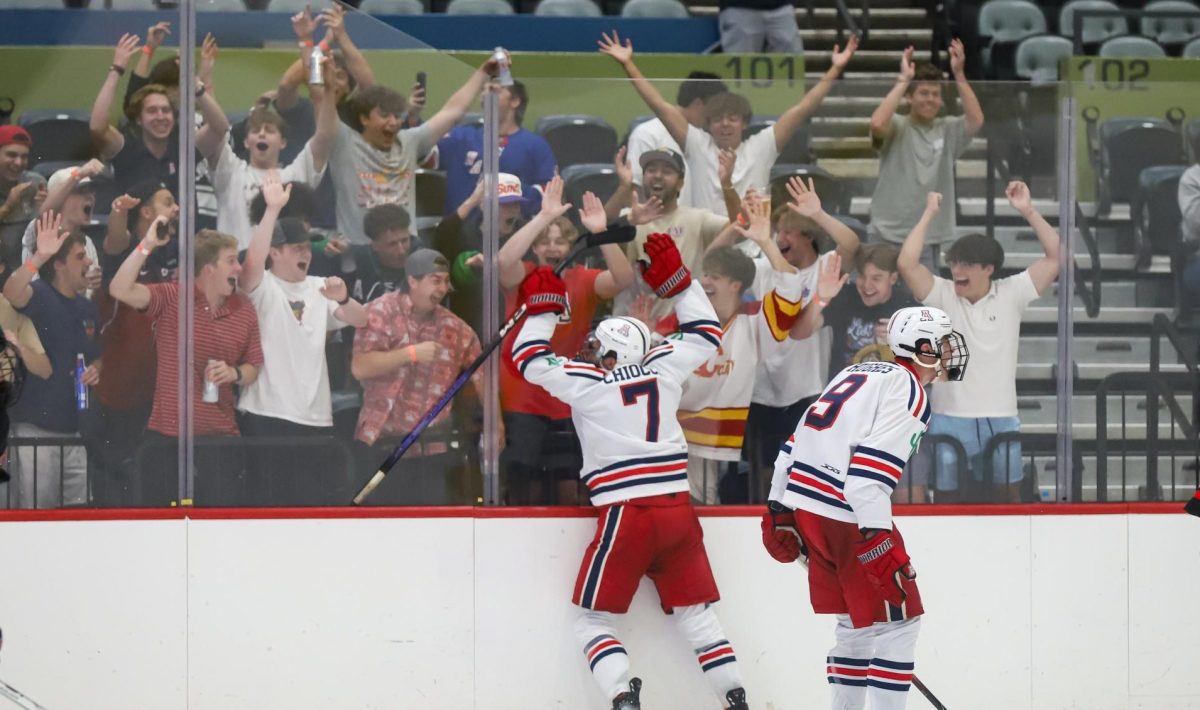Look around McKale Center this Saturday.
You’ll see students by the thousands — blurred together like one cardinal-red brush stroke — composing a vibe more distinguished than the smell of summer monsoons.
You’ll see UA President Robert Shelton in front of his courtside seat shaking hands, standing and clapping from tipoff until ASU scores its first basket, which could take minutes.
You’ll see the athletes, coaches and competition as advertised on billboards, tickets and tweets from athletic director Greg Byrne.
But look closer.
Sitting in Section 114 could be that nurse from University Medical Center who worked hours of overtime this week.
In line for nachos could be that first responder from the Tucson Fire Department who spent last Saturday morning serving in disbelief.
Watching could be that cousin of Christina Green, the 9-year-old girl who was shot and killed after a gunman open fired on innocent lives. Five more were killed and 14 injured, including the attempted assassination of U.S. Rep. Gabrielle Giffords, who remains in critical condition.
Maybe the guy selling lemonade or usher working the ZonaZoo voted for her.
Look even closer. Everyone else is: NBC news crews. CNN live reports. The New York Times journalists. It’s trending on Twitter.
With so much media attention surrounding the tragedy in Tucson, the UA can continue to host and comfort a community in mourning by leveraging the school’s most beloved tradition into a rallying epicenter to the tragedy it shares deep ties with.
And there’s a basketball game, too.
Every year these sports pages hype the UA-ASU rivalry game as the no-love-lost “”Duel in the Desert,”” but it wouldn’t hurt, just this one time, to ask for Peace in the Desert.
Just this once, in the rarest of all sports atmospheres, UA and ASU fans can cheer together.
No rivals, just people.
When these sports pages use words like “”attack”” to describe a Derrick Williams drive to the rim, we devalue the word newspapers used as a bold front-page headline to describe what the gunman did at the Safeway parking lot.
The only times losses should be described as “”massacres”” are these.
Wildcat fans who want unscripted drama and clutch performances can applaud what UA junior Daniel Hernandez Jr., did on his fifth day as an intern for Giffords.
The 20-year-old ran toward the gunfire.
“”When I realized that congresswoman Gabrielle Giffords had been hit, she became my top priority,”” Hernandez told NPR, “”because she had not only been hit with a bullet but she had also been hit in the head.””
Hernandez picked her up to make sure she could breathe. Then he applied pressure to her head. She somehow remains alive at University Medical Center.
President Barack Obama has recognized Hernandez’s assist on television just as he probably will in person this evening when McKale Center hosts a historic and arguably most meaningful assembly.
Tonight, and this weekend, maybe it’s Hernandez’s name that should hang from the rafters next to past “”Arizona greats”” like Steve Kerr.
Move over, 1997 National Championship team, United States Secret Service is in the rafters tonight.
What about Patricia Maisch, Bill Badger and Joe Zamudio, the three heroes who wrestled the gunman to the ground and grabbed the next round of bullets out of his hand to prevent even more casualties?
(Now that’s real trap defense.)
Or maybe it’s Dr. Peter Rhee, chief of trauma at UMC, who deserves a banner next to those Final Four appearances. He’s handled hundreds battlefield injuries between deployments in both Afghanistan and Iraq.
(And you’re here stressing about Sean Miller’s shot at the NCAA Tournament?)
Whether you’re an ASU fan or UA fan, Democrat or Republican, Saturday’s game suddenly melts alliances in a way only sports can bring together people.
With the entire state’s vested interest between both teams, Saturday’s venue, timing and spirit should present an uplifting atmosphere only a sporting event could.
Everyone’s watching.
— Bryan Roy is an interdisciplinary studies senior. He can be reached at sports@wildcat.arizona.edu













